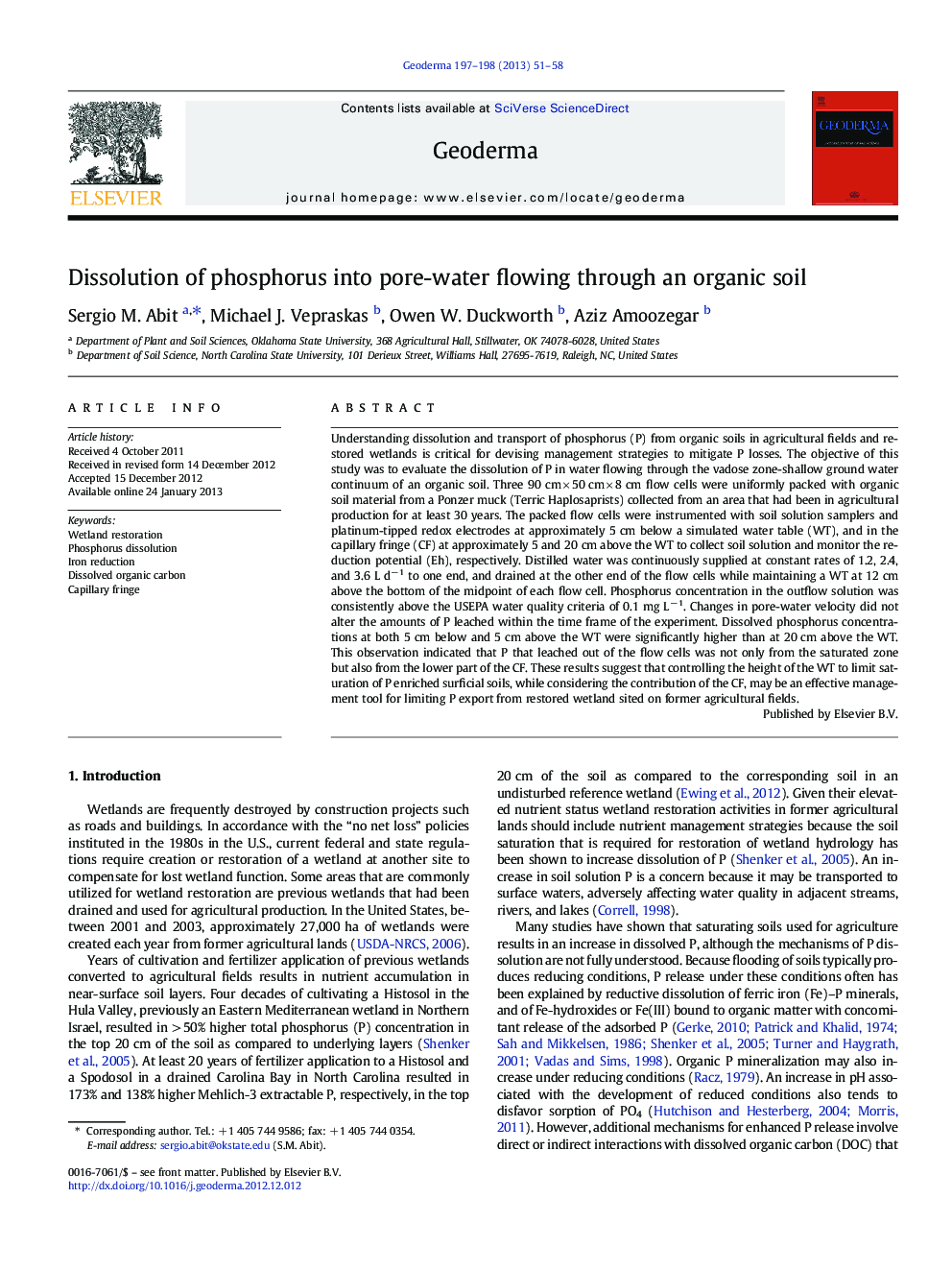| Article ID | Journal | Published Year | Pages | File Type |
|---|---|---|---|---|
| 4573725 | Geoderma | 2013 | 8 Pages |
Understanding dissolution and transport of phosphorus (P) from organic soils in agricultural fields and restored wetlands is critical for devising management strategies to mitigate P losses. The objective of this study was to evaluate the dissolution of P in water flowing through the vadose zone-shallow ground water continuum of an organic soil. Three 90 cm × 50 cm × 8 cm flow cells were uniformly packed with organic soil material from a Ponzer muck (Terric Haplosaprists) collected from an area that had been in agricultural production for at least 30 years. The packed flow cells were instrumented with soil solution samplers and platinum-tipped redox electrodes at approximately 5 cm below a simulated water table (WT), and in the capillary fringe (CF) at approximately 5 and 20 cm above the WT to collect soil solution and monitor the reduction potential (Eh), respectively. Distilled water was continuously supplied at constant rates of 1.2, 2.4, and 3.6 L d− 1 to one end, and drained at the other end of the flow cells while maintaining a WT at 12 cm above the bottom of the midpoint of each flow cell. Phosphorus concentration in the outflow solution was consistently above the USEPA water quality criteria of 0.1 mg L− 1. Changes in pore-water velocity did not alter the amounts of P leached within the time frame of the experiment. Dissolved phosphorus concentrations at both 5 cm below and 5 cm above the WT were significantly higher than at 20 cm above the WT. This observation indicated that P that leached out of the flow cells was not only from the saturated zone but also from the lower part of the CF. These results suggest that controlling the height of the WT to limit saturation of P enriched surficial soils, while considering the contribution of the CF, may be an effective management tool for limiting P export from restored wetland sited on former agricultural fields.
► In this study, organic soils were flooded to mimic wetland restoration. ► Phosphorus (P) concentrations in the outlet were generally above USEPA standards. ► Exported P is from both the lower capillary fringe and below the water table (WT). ► Manipulation of the WT may be used to reduce P export in restored wetlands. ► Possible P-dissolution mechanisms in studied system are discussed.
